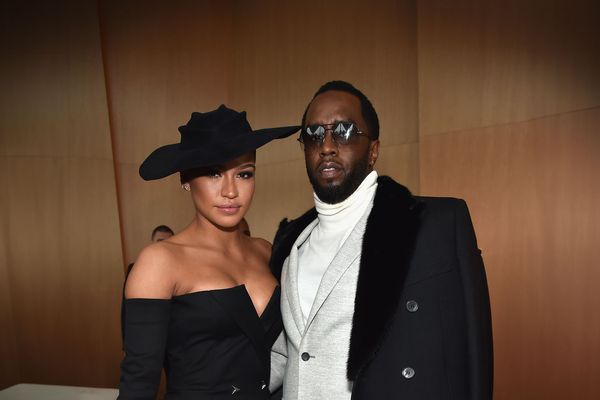
This week I was invited to chair a roundtable on the topic of green communications and, specifically, what the experience of McDonald's recent McStories Twitter misadventure might tell us about social media sustainability communications.
In January, you may remember, McDonald's found itself embroiled in a social media mess after a marketing campaign to get people tweeting about their best McDonald's experience using the hashtag #McStories backfired spectacularly.
Everyone on the roundtable agreed that the stream Twitter invective levelled at the fast food giant through #McStories was an obvious signal that companies can't control marketing messages in the social media age. Some in the discussion also thought it might make companies think twice about getting involved in social media. Yet, all agreed that the potential power of social media was too big an opportunity to ignore for companies looking to communicate sustainability. Indeed, we all agreed that social media and sustainability should be a particularly powerful combination given that both are rooted in the principles of authenticity, transparency, collaboration and community.
So what is holding companies back? Well, putting it plainly, companies are petrified of screwing-up, and that fear is magnified when their social responsibility is put under the microscope. It's not hard to understand their reticence. Twenty-three of the case studies in our new book, #FAIL: The 50 Greatest Social Media Screw-Ups, are sustainability or CSR-related.
Obvious examples are BP's experience during the Deepwater Horizon disaster, Unilever's Dove brand getting ambushed by Greenpeace, and, yes, the recent #McStories fiasco.
Others are less well known but just as enlightening. They include Kenneth Cole, Microsoft's Bing and Habitat's tin-eared marketing approach to Twitter communications, along with Carnival Cruise's recent confused approach to social media crisis communications.
Each screw-up is slightly different but trends do emerge. Through analysing all the ways since 2004 that companies have been caught short in a crisis, ambushed by the voice of the people or engaged in plain dumb marketing it is clear that, time and time again:
• Companies underestimate the collaborative and viral power of social media
• Marketing, PR, crisis and sustainability teams fail to communicate with one another before communicating to the public
• Brands think they can use old-school marketing tricks and messages to control conversations.
Ironically, one of the most revealing case studies is Carnival Cruises, a company that has been lauded for its smart social media marketing. It has 1.4 million fans on Facebook and keeps them dreaming of that next vacation with sunny, upbeat updates on exotic locations. However, all that changed on the fateful evening of 13 January when the Carnival-operated Costa Concordia ran aground on the rocks of Italian island, Giglio, killing 25 people and leaving seven missing and presumed dead.
Initially, Carnival turned its conversational clout to informing the world about the rescue efforts and the company's dedication to safety. Then, on 19 January Carnival posted this on its Facebook wall:
"Out of respect for all those affected by the recent events surrounding our sister line, Costa cruises, we are going to take a bit of a break from posting on our social channels. We will still be actively listening and answering any questions you have about your past or upcoming cruises, but for now, the majority of our time will be spent focusing on all those affected by this event. We thank you again for all your support."
Except that it didn't take a break. One day later Carnival's Twitter account retweeted a Friday Follow (#FF) shout-out for the company, as well as some other upbeat marketing messages. At the same time, news broke that Carnival had offered to compensate Concordia survivors by offering a 30% discount off their next Carnival cruise … and social media channels lit up with outrage over the company's insensitivity.
Unfortunately for Carnival, between 19 and 24 January, when it was getting roasted, the company was silent on Facebook and bumbling on Twitter with a few inane posts that neither suggested respect for victims of the tragedy nor any indication that it was listening to the social media storm brewing around its insensitive discount offer.
So where did Carnival go wrong? The key to successful social media crisis communication is all about having structures and processes in place to deal with information and innuendo that is spreading virally in real time.
At first, Carnival gained social media kudos for responding promptly, and with useful information, to customer concerns and queries. But the longer the crisis continued it seemed the company was caught between its default social media marketing mentality and an emergency response directive. The result was Carnival sent out a series of mixed messages. Also, by "going dark" during a crucial point in handling the crisis, it lost the ability to use social media to answer growing criticisms of how it was treating the victims.
Corporate experience of social media is only eight years old but, as the many instances of screw-ups and mistakes make clear, communicating successfully in this new online landscape requires a sea change in the way companies operate. That is especially true when it comes to sustainability communications. Yet, as those thinkers at the recent roundtable quickly identified, if companies adhere to the jointly held values of authenticity, transparency, collaboration and community, social media should hold no fear.
Matthew Yeomans is the co-author of #FAIL: The 50 Greatest Social Media Screw-Ups and co-founder of SMI
This content is brought to you by Guardian Professional. Become a GSB member to get more stories like this direct to your inbox







